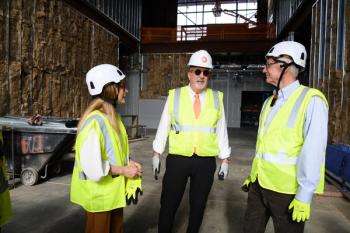
Peel away from sticker shock in veterinary medicine with this practice procedure
Train staff to remove veterinarians from the cost-delivery role.
Human doctors have it so easy in practice.
No, I'm not talking about the fact they only have to master one species. I mean they never have to talk about fees. When recommending a blood cell count for a sick child, rarely does the parent immediately ask, “Well, how much is that going to cost?”
I've told agitated clients that the services their pets will receive are significantly cheaper compared to their human equivalents. As I explain how expensive human medical care is and that they're paying for it through taxes and insurance premiums, my logic often falls on deaf ears.
As a profession, I think we do a fair job of taking the doctor out of the cost delivery role-but we're still asked about cost. My usual answer is, “I don't know, but someone will be in shortly with a treatment plan.” It's not hard to create a system within the hospital to deliver the financial implications. Usually it's a shared responsibility between receptionists and technicians.
Situations that are hard to predict or rare can present problems. Bringing up cardiopulmonary resuscitation (CPR) can be difficult, let alone adding a price tag to it. Recently, I had a non-client rush in the door with a pet for an emergency. As trained, the receptionist asked if the client authorized CPR and the resulting costs as his pet was rushed into the treatment area. The pet was in bad shape but did not need resuscitation. After I made my initial assessment, I went to discuss the case with the client.
The owner was upset with the “sales job” that had just been forced on him. Rather than focusing on his pet, I found myself discussing the entire veterinary industry with the owner before bringing us back to what really mattered and why he was here.
Another case involved a 13-year-old large-breed dog for inappetence and vomiting. The owners said they wouldn't spend a lot of money. After initial diagnostics were unremarkable, the owners agreed to an ultrasound. It showed a significant amount of intestines bounded up. I didn't think they would go for surgery because the estimate was several thousand dollars, but they hardly blinked an eye and agreed.
The exploratory was a doozy-three feet of small intestines that already had dehiscence had to be resected. The surgery was a success, but it took me an hour longer than planned. Speaking with the owners that night, I explained the extent of the procedure and the extra time. The final cost was $600 more than the estimate, but I believed it was more important to discuss my concerns with peritonitis than talk about money. Besides, when they didn't flinch at the high estimate, what's $600 more?
The owners came to pick up their dog and didn't get the final price until they were checking out, and they weren't happy. I understand because they had a price in mind before paying, but I thought my earlier hints conveyed the point. However, they missed it.
I'll always believe that our primary focus should be to provide good medical care, and the money side will work out. But discussing the cost has to be done. Practices should implement a system to address it, no matter how uncomfortable the situation is.
Dr. Andy Rollo is an associate at Madison Veterinary Hospital in Madison Heights, Michigan, as well as a Veterinary Economics Editorial Advisory Board member.
Newsletter
From exam room tips to practice management insights, get trusted veterinary news delivered straight to your inbox—subscribe to dvm360.




